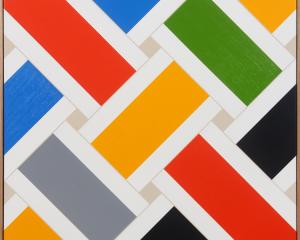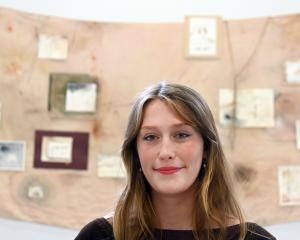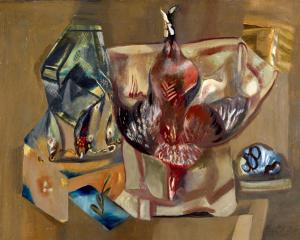He's travelled back to the past to look at the present, reinventing Captain Cook on the way. Nigel Benson catches up with Nigel Brown.
He is New Zealand's foremost folk artist and, arguably, our most important contemporary narrative artist.
A major exhibition of Nigel Brown's work, "All Our Days", opens at Milford Gallery in Dunedin this weekend.
"All Our Days" features more than 30 works by the artist.
"It's the first time these works have been shown," Brown (60) says from his Cosy Nook home, near Tuatapere.
The roughly-hewn works depict Captain James Cook as an elusive and variable New Zealander.
"I started looking back when I was in Tolaga Bay in the early '90s," Brown says.
"My partner Susan [McLaughlin] and her family had history there. That's where I got interested in Cook's Cove and then other things started coming in after that.
"My stepson had a Cook Island girlfriend and that got me involved in the Pacific. Then that whole historical thing was under debate with the Maori radicalism and all that dynamic.
"Then I decided about four years ago to give it another go. So, when I went on that boat trip to Dusky Sound in 2007, I had all this material creeping in."
Brown travelled to Dusky Sound with a group of artists and poets on the inaugural Caselberg Creative Wilderness Residency on Breaksea Girl in 2007.
"This new body of work sees Cook becoming more Maori. That breaking down of the European aspects connects with a changing identity for New Zealand as part of the Pacific - an Aotearoa moving beyond its colonial beginnings.
"The land absorbs us and we become naturalised. All this implies a creative evolution.
"Cook's not just a Pakeha ancestor but he's an ideal hero with feet of clay. He also represents, to me, cool-headedness and rationality and I've set that against other elements, like the organic and intuitive.
"He's undermined by that and I see that in everyone. There's the rational side of people and their dreaming, or intuitive, side. Cook's become a vehicle for me to talk about that in everybody in society."
Brown (60) has been a full-time artist since 1978 and has lived at Cosy Nook since relocating from Auckland in 2001.
He studied at the Elam School of Fine Art, where he trained under Colin McCahon.
Brown says he was largely influenced by McCahon's "strength of purpose and single-mindedness".
"McCahon's influence comes out at different times. The big difference with this show is that McCahon wasn't interested in the historical so much, whereas I'm using history to talk about the present.
"It was Colin who first suggested, when I was at art school, that I put the words in the borders. I was quite pictorial, whereas the words sit flat on his works. With me, the words often have to be separated off.
"McCahon told me way back in '72 to `paint less and think more'," Brown says.
McCahon's influence is evident in the strong borders and writing Brown often uses in his work.
"The lettering in my work always stays the same. I think my father's fruit cases were also probably an influence."
The artist's father, R. F. Brown, was an orchardist in Tauranga during the 1960s.
"It's very much a matter of going ahead and doing it. Not worrying about whether it works or not. If it is unrealistic or neurotic, it may be rejected by the viewer. If it corresponds with doubts or issues relevant to society, it will be of purpose. Do great, unique work and people will come to you," he says.
"I work with archetypes rather than the particular person. All my archetypes are aspects of myself or people I know.
"I like the position - and adopt it naturally - of telling things from a `let's pretend' standpoint. Much of my work has stage and actor."
Brown is a versatile artist.
He has worked with woodcut printmaking and has undertaken two large stained-glass window designs for St Mary's Catholic Church and Auckland Cathedral.
In 2004, he was awarded the Order of New Zealand Merit for services to painting and printmaking.
See it
"All Our Days" opens at Milford Galleries, Dunedin, at 2.30pm on Saturday and runs until July 1.
Artist Nigel Brown and poet Glenn Colquhoun, who has written an essay to accompany the exhibition, will speak at the opening.















